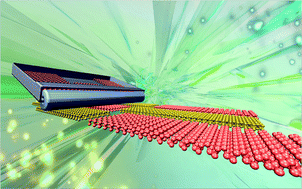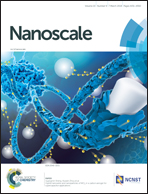Efficient selection methods for black phosphorene nanoribbons
Abstract
Black phosphorene (BP) has shown anisotropic, electronic, mechanical, and thermal properties for various promising applications in recent years. To take full advantage of this unique anisotropy in its further functional design and application, it is of paramount importance to separate BP with well-defined chirality quickly and precisely. In this paper, we propose three efficient methods to separate BP ribbons with different chiralities by utilizing their strong chirality-dependent bending stiffness. Our results show that the bending stiffness in the zigzag direction is 4 times larger than that in the armchair direction. The mechanical anisotropy and bending–binding competition are used to realize chirality-dependent design. To fold, wrap or scroll the BP nanoribbons, it is necessary to overcome the bending stiffness by applying the binding energy between the BP nanoribbons and the contact surfaces. Due to the mechanical anisotropy, the BP nanoribbons could easily be folded, wrapped and scrolled along the armchair direction rather than the zigzag direction. Therefore, we introduce this characteristic in our chirality separation designs as, the self-folding model to fold up the armchair BP nanoribbons by nanoparticles, the suspension-bridge sieve model to pull down the armchair BP nanoribbons, and the nanorod-roller model to scroll up the armchair nanoribbons. Our separation methods in this research can be extended to other 2D materials with anisotropic mechanical properties. We hope our findings would offer a novel route for the manufacturing of BP-based electronic devices and self-assembly of nano-devices.



 Please wait while we load your content...
Please wait while we load your content...